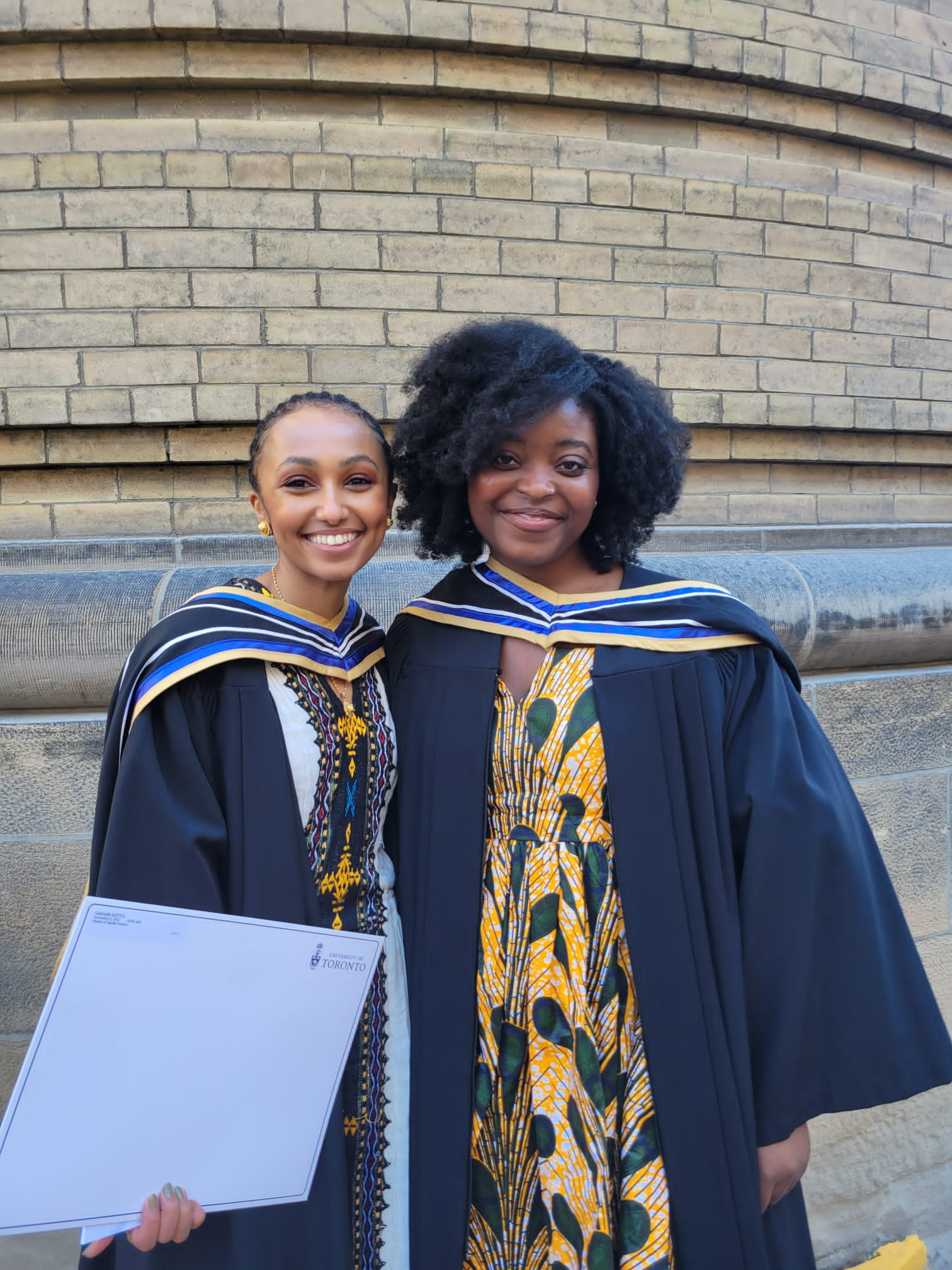U of T grads create self-advocacy handbook for Black patients navigating perinatal care

Published: December 2, 2022
Two graduates of the University of Toronto’s Temerty Faculty of Medicine are working to improving perinatal care for Black birthing people in Canada.
Gabrielle Retta and Gemma Kabeya are both graduates of the Master of Health Science in Translational Research Program (TRP), which brings together thought leaders, students and mentors to transform scientific discoveries into innovations that improve human health.
For their capstone project last year, they founded the Black Birthing Experience Project. The initiative features a patient handbook focused on self-advocacy through different stages of care, as well as a caregiver guidebook to improve Black perinatal health-care outcomes.
 Gabrielle Retta and Gemma Kabeya founded The Black Birthing Experience Project.
Gabrielle Retta and Gemma Kabeya founded The Black Birthing Experience Project.
“A lot of the time, the needs of Black birthing people get ignored in a disproportionate amount, compared to other communities,” Retta says.
“We knew that self-advocacy was an important aspect to help increase the odds of getting a say in your care.”
With Canada’s lack of nation-wide, systematically tracked, race-based health data, Retta and Kabeya explored an alternative approach to research. They turned to their community for insight into the Black patient care experience. They also developed a partnership with The Birth Place Lab (BPL), which hosts multidisciplinary, community-based participatory research on maternity health care within the University of British Columbia’s midwifery program.
In a review of foundational studies based in the United States and the United Kingdom, they found that during perinatal care Black birthing people expressed autonomy concerns, among others. They recounted having cultural needs in a birth plan ignored, being refused certain care and having medical interventions or procedures administered without patient consent during pregnancy and delivery.
“We are trying to reduce those traumatic experiences in ways that are tangible,” Kabeya says.
Black birthing people are more likely to have gynecological complications like endometriosis or pre-term birth yet are less likely to be screened or monitored to prevent such issues, Retta and Kabeya explain.
TRP capstone projects provide students an opportunity to propose and produce meaningful translational research projects in collaboration with the university, partner hospitals and community networks.
Retta and Kabeya conducted 25 informal interviews with graduate and PhD students, doctors, midwives and professionals in the women’s health and health equity fields to understand the obstacles Black birthing people face in Canada.
They also partnered with organizations in the Greater Toronto Area for feedback on the handbook and guidebook. They include: Jessie’s Centre, Better Outcomes Registry and Network, and the Provincial Council for Maternal and Child Health.
“When certain issues are not being published, we have to take alternative routes and methods to addressing problems,” Kabeya says.
“Through our project, we’re highlighting the impacts of epistemological racism and the alternate approaches you can use to validate your work when publications readily ignore the issues you’re trying to address. These issues are very real – even if we can’t cite Canadian research on the topic.”
Alongside the BPL, Retta and Kabeya surveyed 145 people who identify as Black to understand differences in care delivery models and patient outcomes from midwives and obstetrician-gynecologists. Results showed that support through a partner or doula – a trained professional who provides a birthing person with support during and after pregnancy – and postpartum check-ups can improve care and help patients feel more in control.
The pair is working on finalizing data and feedback from patients on the handbook. Toronto Metropolitan University also approached Retta and Kabeya to integrate their findings into the Black Prenatal Care Module within the school’s midwifery program.
Retta and Kabeya hope their project brings attention to the need for more evidence in this area and plan to further develop The Black Birthing Experience Project.
“It’s been encouraging to have partners who want us to continue this project after our program,” Retta says. “It’s been inspiring to see others working in these spaces and taking the time to mentor younger researchers who want to have an impact in this field.”


